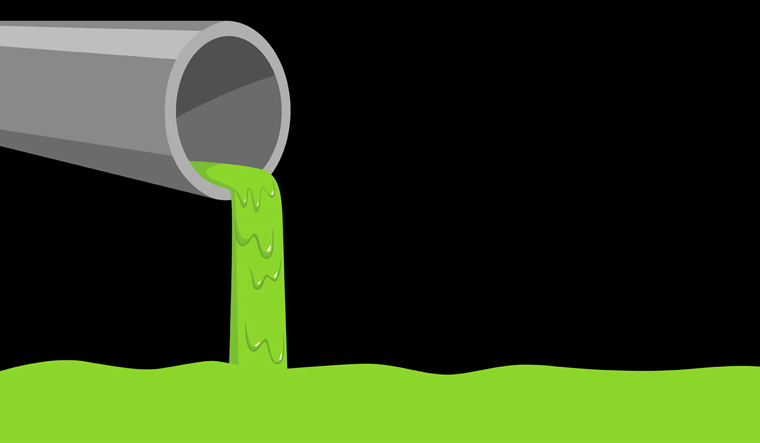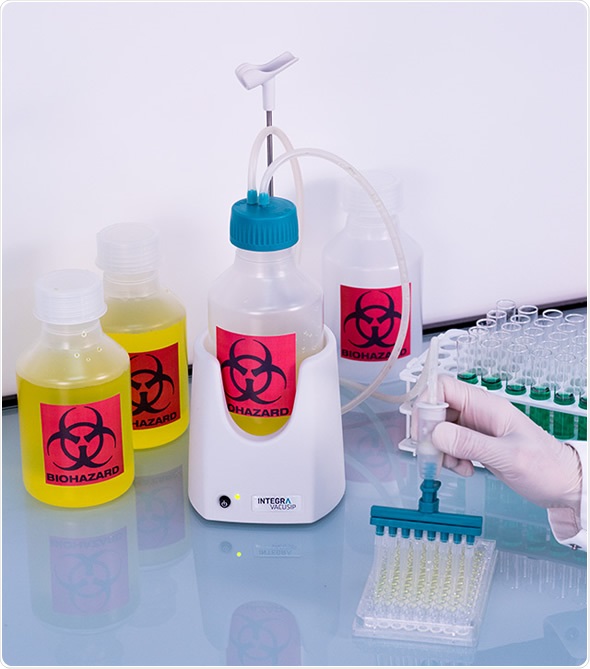Just How Fluid Garbage Disposal Works: A Comprehensive Summary of Methods and Technologies Employed

Summary of Fluid Waste Types
The intricacy of fluid waste kinds demands a comprehensive understanding of their qualities and implications for disposal. Liquid waste can broadly be categorized right into a number of kinds, including industrial, metropolitan, agricultural, and hazardous waste. Each classification exhibits unique buildings, calling for details monitoring strategies to mitigate environmental and health risks.
Industrial liquid waste originates from making procedures and usually has a range of impurities, such as heavy steels, solvents, and natural substances. Community liquid waste, mainly comprising wastewater from households and commercial establishments, contains raw material, nutrients, and virus (industrial wastewater treatment). Agricultural liquid waste, including overflow from farms, might contain fertilizers, chemicals, and animal waste, posing threats to water top quality and environments
Harmful liquid waste is identified by its toxicity, sensitivity, or possible to trigger harm. This category consists of substances like acids, bases, and particular chemicals that necessitate rigid handling and disposal procedures. Comprehending these varied fluid waste types is essential for developing effective disposal techniques and ensuring compliance with ecological regulations. Correct category and characterization are vital for executing suitable treatment strategies and minimizing the adverse influences on public wellness and the setting.
Physical Treatment Approaches

Testing is the initial action, where bigger particles and particles are eliminated from the fluid waste utilizing displays or grates. In sedimentation containers, much heavier fragments work out at the bottom, creating a sludge layer, while the made clear liquid can be further treated.
Filtration is one more necessary technique that involves passing the fluid through porous products, such as sand or membrane layers, to record smaller sized fragments. This action enhances the quality of the fluid, making it suitable for subsequent treatment procedures.

Chemical Therapy Techniques
Chemical treatment methods are necessary for properly managing liquid waste, particularly in attending to dissolved and colloidal contaminants that physical methods might not effectively remove. These strategies utilize various chemical agents to reduce the effects of, speed up, or transform unsafe compounds into less unsafe types.
One usual approach is coagulation and flocculation, where chemicals such as alum or ferric chloride are included in promote the aggregation of suspended fragments. This process improves sedimentation, allowing for less complicated elimination of the resulting sludge. In addition, oxidation procedures, employing representatives like chlorine or ozone, are utilized to damage down intricate organic compounds and virus, providing the waste more secure for discharge or further therapy.
Neutralization is one more crucial method, which adjusts the pH of acidic or alkaline waste streams to neutral levels, protecting against possible harm to downstream systems and the environment. Additionally, advanced oxidation processes anchor (AOPs) use combinations of oxidants and ultraviolet light to weaken consistent toxins, achieving a higher degree of therapy efficiency.
Biological Treatment Processes
Biological therapy processes play a crucial role in the monitoring of fluid waste by utilizing microbes to decay raw material and lower impurity degrees. These procedures can be broadly categorized into cardio and anaerobic treatments, each employing details microbial areas to achieve effective waste deterioration.
Cardio therapy entails the usage of oxygen to assist in the malfunction of natural products by bacteria. This procedure is commonly executed in turned on sludge systems, where aeration storage tanks provide a helpful environment for microbial development, leading to the oxidation of natural toxins. The resultant biomass can be separated from dealt with effluent through sedimentation.
On the other hand, anaerobic treatment occurs in the absence of oxygen, depending on various germs to break down raw material. This method is especially useful for high-strength waste, as it produces biogas, a renewable resource source, while lowering over at this website sludge manufacturing. Technologies such as anaerobic digesters are frequently utilized in local and commercial applications.
Both cardio and anaerobic organic therapies not only decrease the environmental impact of fluid waste but additionally help with resource recuperation, making them crucial parts of lasting waste monitoring approaches. Their efficiency, adaptability, and performance support their extensive execution across different markets.
Emerging Technologies in Disposal
Ingenious strategies to fluid garbage disposal are rapidly evolving, driven by developments in modern technology and a raising emphasis on sustainability. Amongst these emerging modern technologies, membrane bioreactors (MBRs) have actually gained grip for their capability to integrate biological treatment with membrane filtration, leading to top notch effluent that can be recycled in various applications. MBRs allow smaller footprints and extra effective operations compared to conventional systems.
One more promising advancement is using anaerobic digestion incorporated with nutrient recovery technologies, which not only deals with fluid waste but also generates biogas and recovers important nutrients like nitrogen and phosphorus. This dual advantage enhances source effectiveness and lowers ecological impact.
Furthermore, progressed oxidation processes (AOPs) are being taken on for the deterioration of complex organic toxins. These techniques make use of powerful oxidants and catalysts to damage down impurities at the molecular level, providing a highly effective remedy for tough waste streams.
Furthermore, the combination of expert system and maker understanding in waste management systems is maximizing operational effectiveness and predictive upkeep, causing minimized costs and enhanced environmental conformity. These technologies show a substantial shift towards even more lasting and reliable liquid garbage disposal practices.
Verdict
Finally, effective liquid waste disposal demands a detailed understanding of various strategies and innovations. The integration of physical, chemical, and organic therapy techniques makes sure the efficient monitoring of diverse waste types. Additionally, the development of cutting-edge modern technologies improves treatment efficacy and advertises sustainability in waste administration methods. By constantly progressing these approaches, it becomes possible to resolve the growing challenges Recommended Reading associated with liquid waste, ultimately adding to environmental security and source recovery.
Liquid waste disposal is an essential element of ecological management, needing a comprehensive understanding of various techniques and innovations customized to different waste kinds. Liquid waste can extensively be categorized right into a number of types, consisting of industrial, municipal, farming, and dangerous waste. Agricultural fluid waste, including runoff from ranches, may consist of fertilizers, chemicals, and animal waste, posturing threats to water top quality and ecological communities.
Different physical treatment techniques play a vital role in managing fluid waste successfully - industrial wastewater treatment.In conclusion, reliable liquid waste disposal demands an extensive understanding of numerous strategies and innovations